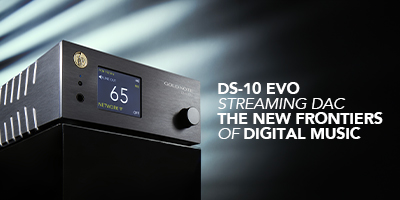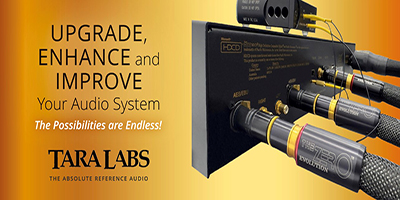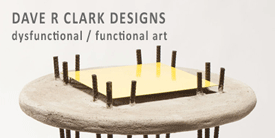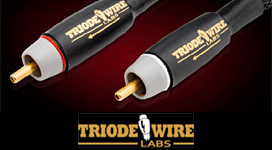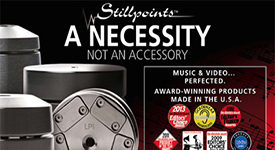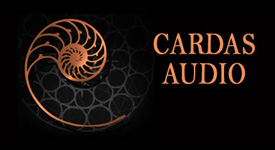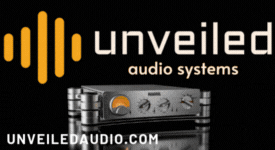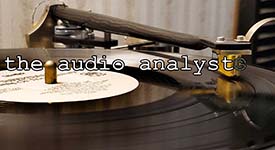I get all giddy thinking about DIY audio projects, and particularly when they involve Frederik Carøe (Duelund Coherent Audio).
If you read my recent State Of The Systems Report: Audio Nirvana! Part 1, and State Of The Systems Report: Office Nirvana! Part 2, you noticed that both those loudspeaker systems - Tannoy Westminster Royal SEs and vintage custom Altecs made for conductor Leopold Stokowski - are based on loudspeakers that were upgraded with Duelund crossovers in projects that Frederik and I collaborated on.
To say those projects turned out well would be an understatement - they turned out spectacularly well!
I didn't mention one of my loudspeakers systems in my State of the Systems Report, my lovely vintage Altec Corona 832A loudspeakers that I use in my bedroom A-V system.
I am an Altec-oholic. I just love those vintage Altec loudspeakers! That's a photo of them above next to my Westminsters for a size comparator.
I bought my pair of vintage Altec 832A Corona loudspeakers from LA Jazz Audio in about 2018, if memory serves me correctly.
I am absolutely crazy in love with these vintage Altec 832A Corona loudspeakers, they are truly something special, and make music come alive with a live-likeness that few speakers can approach.
The components compliment of my Coronas were the 803A bass drivers (1947-1958), 802D compression drivers (1957-1972), 811B HF horns, and N800E crossovers.
That components complement would place their production circa 1957-1958, which is about the same time I was produced, so they are now nearing seven decades old.
The Altec 832A Corona's cabinets were designed so they can be easily placed in room corners, like corner horns, although they're not actually a true corner horn as the bass driver is not horn-loaded.
Back in the 1950s, room-boundary positioning of loudspeakers was considered to be an important option for those who had smaller rooms, or didn't want a room to be completely visually dominated by large loudspeakers.
The Altec 832A Corona drivers, horns, and crossovers, are similar to the component complement used in a pair of Valencia 846As, for example, which typically have 416-16Z bass drivers, 806A compression drivers, H-811B HF horns, and N-800F crossovers, and which are, very simplistically speaking, later versions of the Corona's earlier versions.
The Corona's (and Laguna's) cabinets were custom made for Altec by Glenn of California, which was a craft furniture maker producing furniture in the California Modernist style that was popular in the 1940s-1950s, and the art-furniture cabinets were one of the Corona's main selling points.
Customers could order Coronas or Lagunas and they were styled to complement the Glenn of California furniture they had in their home, and as such were intended to "disappear" into the corners as functional furniture so they weren't too room dominating. They were considered to be high-performance "art speakers" for a well decorated Glenn of California furnished home.
When I saw this pair of vintage Altec Corona loudspeakers for sale at LA Jazz Audio, I was reminded of what Keith Aschenbrenner of Auditorium 23 told me years ago, that the 803A Altec driver was one of his all-time favorite low-frequency drivers because of their articulate bass response, due to having lighter cones, which of course added to the intrigue I had for this particular pair of Corona's.
Back in the day, Altec recommended the 803A drivers over the 515B low-frequency drivers (like I have in my A5's) for smaller venues and for home systems, as they had more presence.
The Corona's are still fairly large speakers at W37 3/8" X H39" X D24 3/8", and about 122 pounds each, but are much smaller than their more industrial cousins, the A5's and A7's.
The Corona's sold for $762 USD a pair in 1957, which in 2025 dollars would be about $7075 USD. A Chevrolet Corvette sold for $3176 USD in 1957 as a comparator.
Currently I am using my Coronas in my master bedroom A-V system. My house has a bit of an unusual design in that the master bedroom is the second largest room in my modestly sized home, and is almost as large as my main music listening room, which is my living room.
I use a pair of SPEC RSP-AZ9EX impedance compensators with my Coronas that Yazaki-san made for them, which was a nice addition, and improved their sound quality a touch. The pair of RSP-AZ9EX consist of high-quality Zobel circuits that provides impedance equalization to counteract the rising impedance of the voice coils caused by inductive reactance, and makes life easier for the amplifier driving it.
With the Coronas placed in room boundary positions (corners) as they are intended to be, their performance is absolutely magic, with superb tone, startling dynamics, vivid presence, and a captivating musicality that I never seem to get tired of.
Well until recently, that is. The components in the crossovers have aged out, and need to be replaced, as their sound quality has deteriorated.
Time to build new crossovers.
Well that brings us to the Duelund-Corona 832A Project that Frederik Carøe (Duelund Coherent Audio) and I are collaborating on. 🙂
Here’s what the project looks like: The N800E crossover circuit is very simple with 1 capacitor and 1 inductor in the high-frequency circuit, and the same for the low-frequency circuit.
In a simple crossover circuit like this the quality of the component parts is paramount, as every little performance nuance becomes audible.
So for a pair of crossovers that would be four 10.5uF capacitors and four 3.5mH inductors for the N800E circuit.
I thought I would use two 16 Ohm L-pads I have for determining the high-frequency attenuation in the circuit. Depending on how the L-pads sound, I’ll leave them in place if all sounds good. Or maybe after I figure out the optimum resistance value for the HF circuit, I would replace the L-pads with fixed resistors.
I asked Frederik what Duelund capacitors and inductors he'd like to use for that application, and he recommended the Duelund CAST Cu.
I will be doing my usual Jeff’s Place & Positive Feedback articles about the Duelund-Corona 832A Project so there will be lots more to come.
Frederik is starting on the Duelund CAST Cu capacitors and inductors for the project now, so I'll keep you posted as things develop.
A huge "Thank-you!" to Frederik for wanting to do another crossover project with me! You're the best! 🙂

